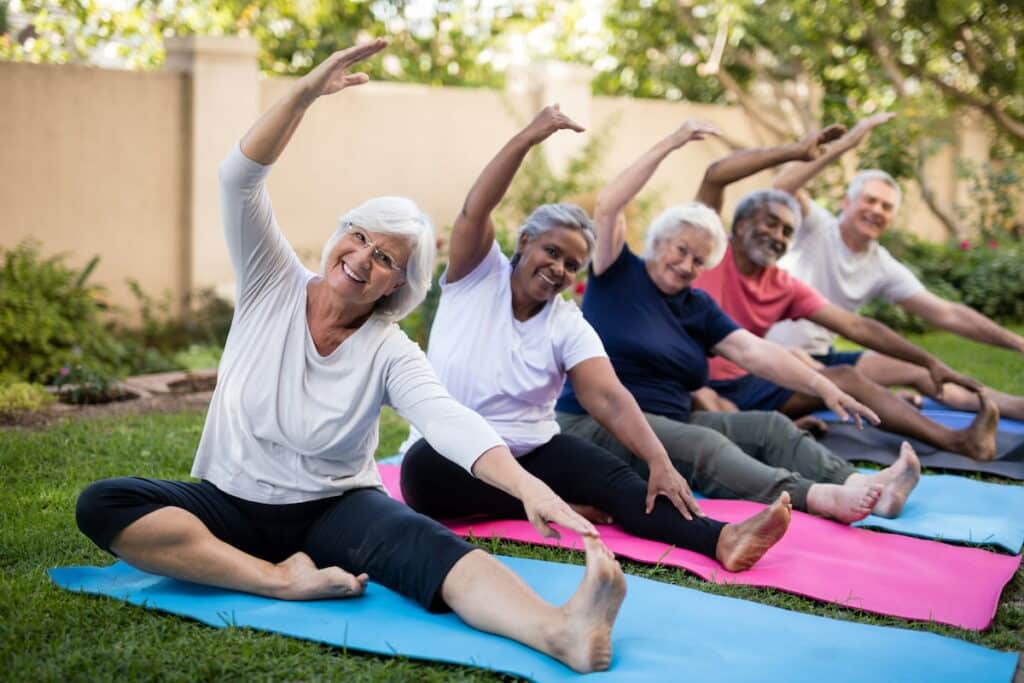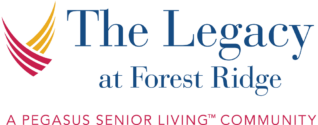Incorporating physical activity and wellness into your daily routine becomes more important as we age. Growing old has many benefits, and becoming inactive shouldn’t be one of them.
Regular physical activity helps maintain self-support and significantly enhances physical and mental health.
Adults 65 and older are encouraged to engage in at least 150 minutes of physical activity weekly through aerobic exercise, strength training, and balance and flexibility training.
Why Is Physical Activity Important?
Incorporating physical activity into your daily routine has short-term and long-term benefits. Short-term benefits include reducing blood sugar levels, stress levels, and sleep.
In the long run, physical activity can improve overall health and reduce the risk of developing diseases such as type 2 diabetes and cardiovascular disease.
Physical Health Benefits
Engaging in regular physical activity includes numerous health benefits. Biometric data illustrates the following:
- Cardiovascular health: Consistent exercise helps improve heart health by increasing blood oxygen levels and improving circulation. This reduces the risk of cardiovascular diseases.
- Hormone balance: Exercise reduces levels of cortisol, the stress hormone, and helps regulate insulin levels, improving overall metabolic health.
- Muscle strength and bone density: Strength training and weight-bearing exercises can help build muscle mass and increase bone density, reducing the risk of osteoporosis and fractures.
- Weight management: Regular physical activity helps maintain a healthy weight, which helps prevent conditions like diabetes, hypertension, and joint problems.
Mental Health Benefits
In addition to the physical health benefits of routine physical activity, the mental health benefits are also significant:
- Cognitive function: Physical activity has been shown to improve cognitive function, enhance memory, and slow down the progression of dementia.
- Mood enhancement: Exercise releases endorphins, which help in reducing feelings of depression, stress, and anxiety.
- Sleep quality: Regular exercise can help improve the quality of sleep, which is essential for overall well-being.
- Social enhancement: Regular physical activity can help prevent social isolation by fostering relationships, community involvement, and enhancing social well-being.
How Often Should Seniors Exercise?
The general recommendation for individuals 65 and over is to engage in at least 150 minutes of moderate-intensity aerobic activity or 75 minutes of vigorous-intensity aerobic activity per week.
Incorporating strength training twice a week into daily physical routines helps strengthen muscles and joints. As a bonus, incorporating physical activities that promote balance, flexibility, and mobility can help improve stability and prevent falls.
Aerobic Activity
Aerobic exercises are important for maintaining and improving cardiovascular health. This type of exercise is usually repetitive, allowing you to adjust your desired level of intensity during the workout.
Aerobic exercises increase heart rate and blood circulation. Your breathing helps to control the amount of oxygen that reaches your muscles, helping you move and burn more energy.
A minimum of 150 minutes of moderate physical activity a week is recommended. This can be broken up into several ways: 30 minutes a day, 5 times a week or, 50 minutes a day, 4 times a week.
Moderate physical activity refers to activity that increases your heart rate and breathing. It can be challenging but should not be exhausting.
Some examples of moderate physical activity include:
- Brisk walking: A simple yet effective way to stay active.
- Biking: A great way to get the heart rate up without putting too much strain on the joints.
- Doubles tennis: Combines cardiovascular exercise with social interaction.
- Gardening: Physical activity doesn’t have to be limited to traditional methods. Incorporating an activity that you enjoy helps maintain consistency in your routine.
- Swimming: Low-impact and excellent for joint health.
Some individuals prefer to engage in more challenging levels of activity. In that case, it’s recommended that older adults engage in at least 75 minutes of vigorous physical activity weekly.
Vigorous physical activity is more intense than moderate activity. It results in heavy and fast breathing and a significant increase in heart rate. A good indicator of vigorous physical activity is the “talk test.” During high-intensity levels, speaking becomes harder. Individuals can only say a few words before pausing to take a breath.
Some examples of vigorous physical activity include:
- Running: A high-impact exercise that significantly boosts cardiovascular health.
- Jogging: Less intense than running but still highly effective.
- Uphill cycling: Adds resistance, making it a more intense workout.

Strength Training
Strength training involves exercises or physical activities designed to improve muscle strength. This usually includes lifting weights, using resistance bands, or performing body-weight exercises like squats and push-ups.
Strength training aims to enhance muscle strength by progressively increasing the amount of resistance or weight used over time.
Older adults are encouraged to perform strength training twice a week in addition to aerobic activity. Strength training helps improve muscle mass and strength, bone density, and cardiovascular health and prevents injury through strengthening muscles, joints, and ligaments.
Examples of strength training include:
- Weight lifting: An effective way to build muscle strength.
- Pilates: Uses resistance to improve core strength and flexibility.
- Barre: Incorporates low-weight and resistance for a full-body workout.
Balance & Flexibility
As a bonus, older adults should consider incorporating activities that improve balance and flexibility into their weekly physical activity routine. These exercises are important for preventing falls and improving mobility.
Examples of balance and flexibility activities include:
- Yoga: This is a full-body workout with varying intensity levels that enhances flexibility, balance, mobility, and mental clarity.
- Tai chi: A gentle form of martial arts that improves balance and reduces stress.
Stay Connected
Incorporating a mix of aerobic exercises, strength training, and balance activities can significantly improve older adults’ mental and physical well-being.
It’s never too late to start incorporating physical activity into your lifestyle. Even a little movement daily is better than no movement at all.
Our team at The Legacy at Forest Ridge is here to provide any guidance that may help to improve your overall health and well-being. Connect with us today!
